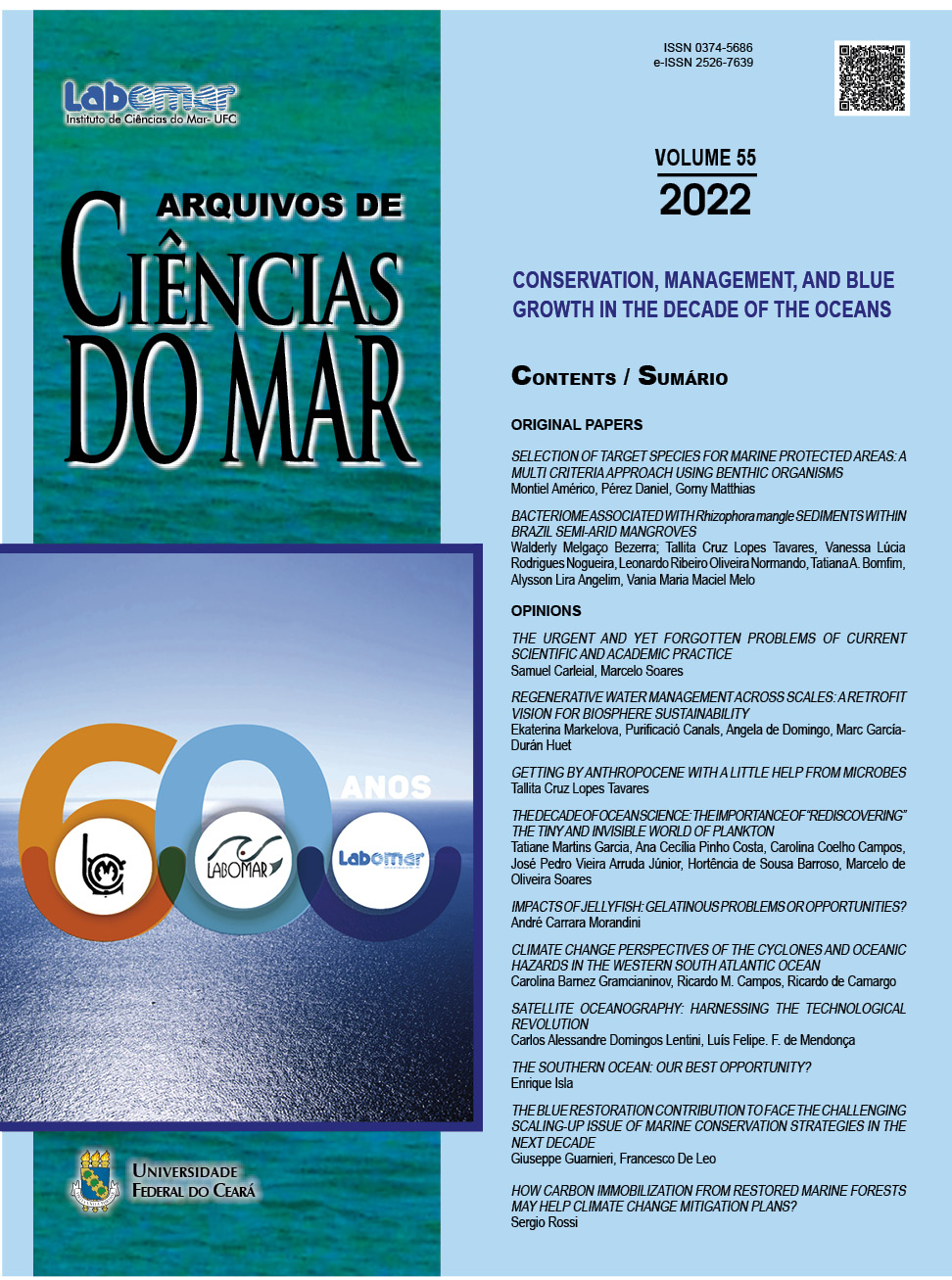GETTING BY ANTHROPOCENE WITH A LITTLE HELP FROM MICROBES
Passando pelo Antropoceno com uma pequena ajuda dos micróbios
DOI:
https://doi.org/10.32360/acmar.v55iEspecial.78213Resumen
When modern man evolved in Africa 250,000 years ago by hunting and gathering, would he dream of megalopolis and flying machines? Would he ever understand how we managed to create and expand so much that this could cause our very decline like an Icarus that reached for the sun while the wax on his wings melts? Nowadays, as we find more and more evidence of the negative impacts we have caused to the biosphere, we are also looking for solutions to write a different future, a sustainable future. In this perspective, I present how a microbcentric approach can help achieve many of the Sustainable Development Goals (SDGs) based on the knowledge that microorganisms are the engines of life on Earth. The science of microbiology has shown that most microorganisms are not pathogens but live in close association with almost any plant or animal, with many advantages that can certainly be used in an evidence-based manner. Each of the 17 SDGs can be strengthened by considering microbes – from improving or restoring soil fertility to produce food to protecting blue carbon ecosystems, such as corals and mangroves. Recognizing that these minuscule beings hold one of the keys to a sustainable future is essential, which would be achieved by strengthening research, microbial literacy actions, and cooperation among scientists, stakeholders, decision-makers, and society. Microorganisms can help us create opportunities for the future, like a Daedalus that finally gets heard by an arrogant Icarus.
Keywords: Sustainable Development Goals, bioeconomy, microbial innovations, sustainability, climate change.
Descargas
Publicado
Número
Sección
Licencia
1. Proposta de Política para Periódicos de Acesso Livre
Autores que publicam nesta revista concordam com os seguintes termos:
- Autores mantém os direitos autorais e concedem à revista o direito de primeira publicação, com o trabalho simultaneamente licenciado sob a Licença Creative Commons Attribution que permite o compartilhamento do trabalho com reconhecimento da autoria e publicação inicial nesta revista.
- Autores têm autorização para assumir contratos adicionais separadamente, para distribuição não-exclusiva da versão do trabalho publicada nesta revista (ex.: publicar em repositório institucional ou como capítulo de livro), com reconhecimento de autoria e publicação inicial nesta revista.
- Autores têm permissão e são estimulados a publicar e distribuir seu trabalho online (ex.: em repositórios institucionais ou na sua página pessoal) a qualquer ponto antes ou durante o processo editorial, já que isso pode gerar alterações produtivas, bem como aumentar o impacto e a citação do trabalho publicado (Veja O Efeito do Acesso Livre).

